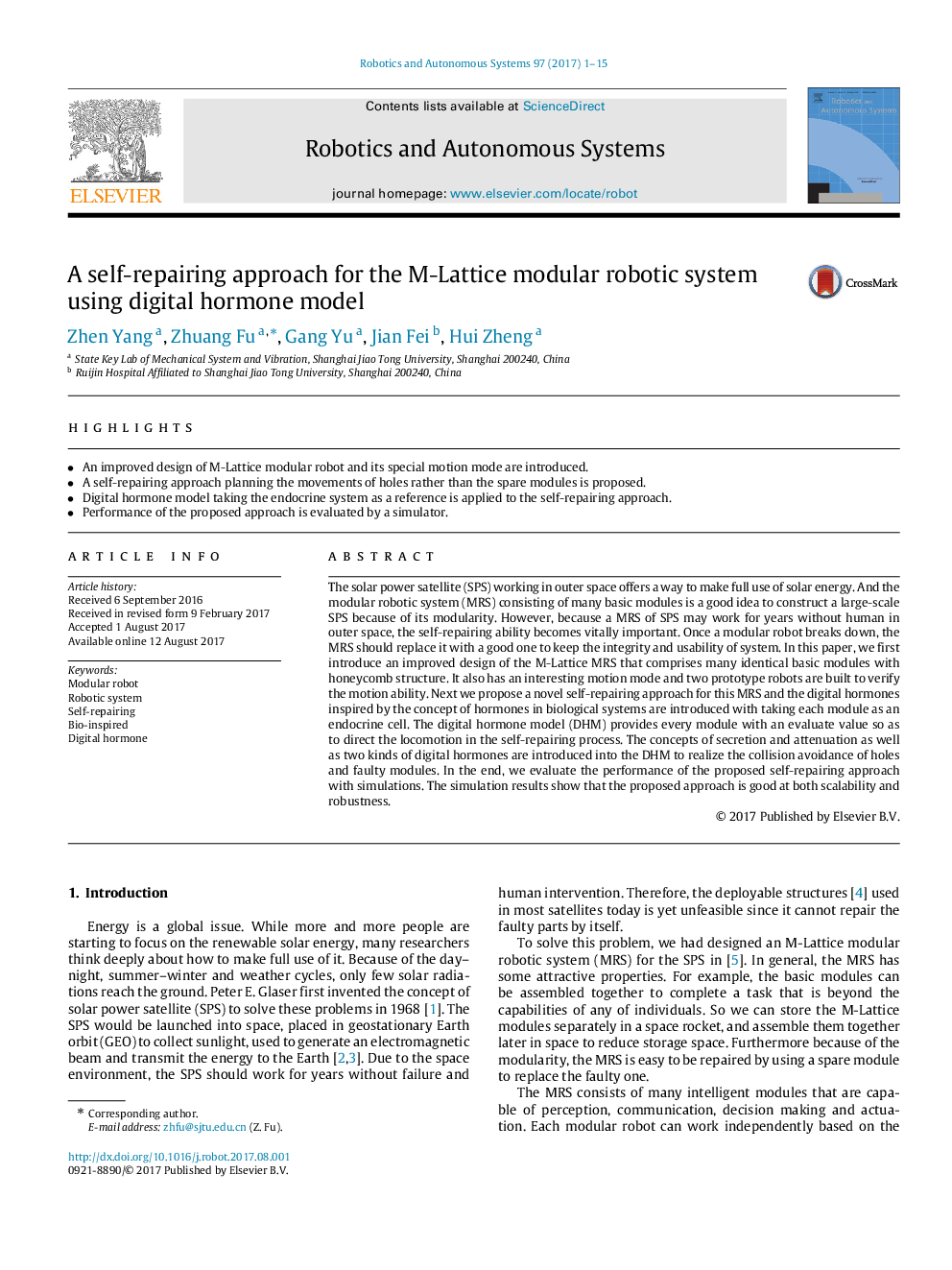| Article ID | Journal | Published Year | Pages | File Type |
|---|---|---|---|---|
| 4948678 | Robotics and Autonomous Systems | 2017 | 15 Pages |
Abstract
The solar power satellite (SPS) working in outer space offers a way to make full use of solar energy. And the modular robotic system (MRS) consisting of many basic modules is a good idea to construct a large-scale SPS because of its modularity. However, because a MRS of SPS may work for years without human in outer space, the self-repairing ability becomes vitally important. Once a modular robot breaks down, the MRS should replace it with a good one to keep the integrity and usability of system. In this paper, we first introduce an improved design of the M-Lattice MRS that comprises many identical basic modules with honeycomb structure. It also has an interesting motion mode and two prototype robots are built to verify the motion ability. Next we propose a novel self-repairing approach for this MRS and the digital hormones inspired by the concept of hormones in biological systems are introduced with taking each module as an endocrine cell. The digital hormone model (DHM) provides every module with an evaluate value so as to direct the locomotion in the self-repairing process. The concepts of secretion and attenuation as well as two kinds of digital hormones are introduced into the DHM to realize the collision avoidance of holes and faulty modules. In the end, we evaluate the performance of the proposed self-repairing approach with simulations. The simulation results show that the proposed approach is good at both scalability and robustness.
Related Topics
Physical Sciences and Engineering
Computer Science
Artificial Intelligence
Authors
Zhen Yang, Zhuang Fu, Gang Yu, Jian Fei, Hui Zheng,
